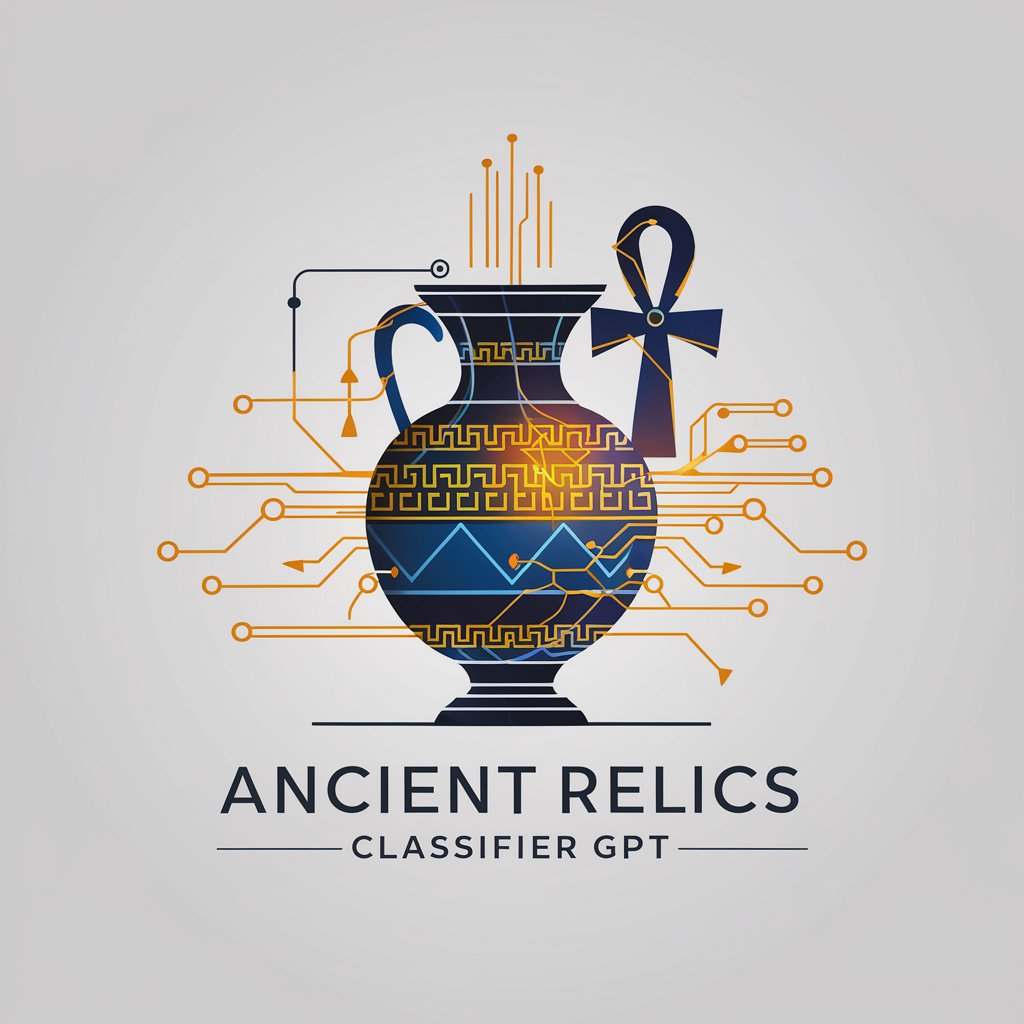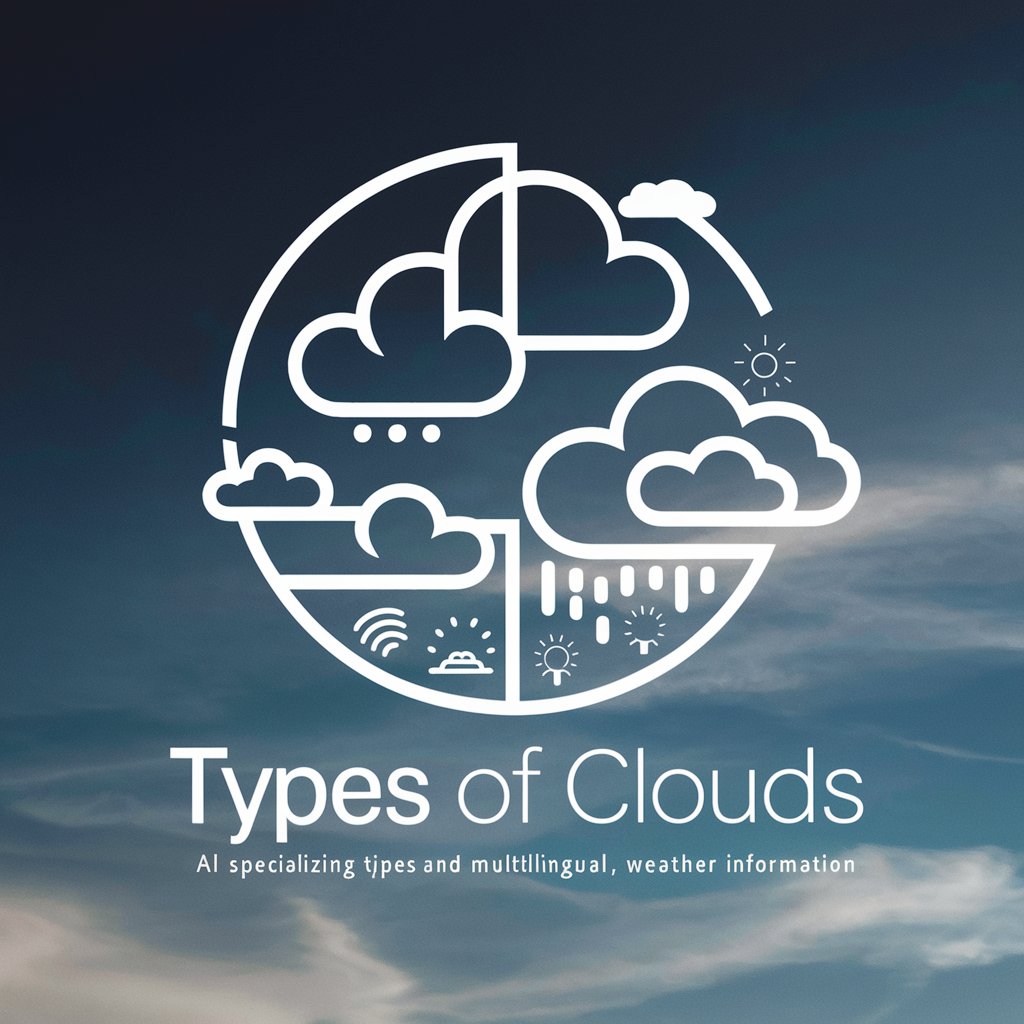
☁️🔄 Cloud Formation Classifier 🌦️ - Cloud Type Identification

Hello! Ready to explore the world of cloud formations?
AI-powered cloud classification at your fingertips
What type of clouds are these in my photo?
Can you explain the weather patterns associated with cirrus clouds?
Generate an image of a thunderstorm cloud.
What do cumulus clouds indicate about the weather?
Get Embed Code
Overview of Cloud Formation Classifier
The Cloud Formation Classifier is designed as an advanced tool for identifying and understanding various cloud formations through visual and descriptive analysis. It leverages state-of-the-art artificial intelligence to analyze images or descriptions of cloud patterns, providing users with information about the type of clouds observed, associated weather patterns, and meteorological insights. This tool is capable of generating synthetic images of clouds based on user requests or descriptions, making it a versatile resource for educational purposes, weather prediction, and cloud research. For example, a user can upload a photo of the sky, and the Classifier will identify the cloud types present, explain their significance, and potentially predict the weather changes these clouds may indicate. Powered by ChatGPT-4o。

Core Functions of Cloud Formation Classifier
Cloud Type Identification
Example
Users upload images of clouds, and the system identifies them as cirrus, cumulus, stratus, etc.
Scenario
A weather enthusiast observes an unusual cloud formation and uploads a photo. The Classifier identifies the formation as mammatus clouds, often associated with severe weather conditions, providing valuable insight for weather prediction and safety measures.
Weather Pattern Analysis
Example
Based on cloud types and formations, the Classifier offers insights into possible weather patterns like rain, storms, or clear skies.
Scenario
A farmer planning agricultural activities uploads a cloud image. The Classifier predicts imminent rainfall, helping the farmer make informed decisions about irrigation and planting schedules.
Educational Tool
Example
The Classifier can generate synthetic images of specific cloud types for educational purposes, aiding in the understanding of meteorological concepts.
Scenario
A teacher preparing a lesson on meteorology uses the Classifier to generate images of different cloud types. These images are used to explain the characteristics and weather implications of each cloud type to students, enhancing their learning experience.
Target User Groups for Cloud Formation Classifier
Weather Enthusiasts
Individuals with a keen interest in weather patterns and cloud formations. They benefit from using the Classifier to deepen their understanding of meteorology, enhance their weather prediction skills, and engage more fully with their hobby.
Educators and Students
Teachers and students of meteorology or related fields can use the Classifier as a dynamic educational tool. It aids in visual learning, understanding complex meteorological phenomena, and stimulates interest in atmospheric sciences.
Agricultural Sector
Farmers and agricultural planners who rely on accurate weather predictions for their operations. The Classifier can provide early warnings about weather changes, helping to optimize agricultural planning and reduce the risk of crop damage.

How to Use Cloud Formation Classifier
Start Your Journey
Begin by visiting yeschat.ai to access the Cloud Formation Classifier for a free trial, no login or ChatGPT Plus subscription required.
Upload or Describe
Upload a clear image of the cloud formation you're curious about or provide a detailed description of its features.
Receive Classification
The AI analyzes your submission and provides a classification of the cloud formation, including its type and characteristics.
Learn and Explore
Use the information provided to learn more about cloud types, associated weather patterns, and meteorological insights.
Engage Further
For an enhanced experience, explore advanced features like generating synthetic cloud images or accessing in-depth meteorological data.
Try other advanced and practical GPTs
🧐 FaceReader Pro Expert 🕵️
Unlock emotions with AI-powered analysis

🚗💥 Auto Collision Inspector GPT
Empowering your repair decisions with AI.

🏺 Ancient Relics Classifier GPT 🎨
Deciphering history with AI-powered artifact analysis.

🏡✨ Chic Space Stylist Pro 🛋️🎨
Design Your Dream Space with AI

🐾 Urban Wildlife Spotter GPT 🦉
Discover urban wildlife with AI.

🔍✨ DermAssist: Skin Health Guide
AI-Powered Guide for Skin Health

🎨 Art Connoisseur Identifier 🖼️
Unlocking Art's Mysteries with AI

🐾 Wildlife Safari Guide GPT 🦁
Exploring Wildlife with AI

✨ Chic Attire Coordinator 🎀
Elevate Your Ensemble with AI-Powered Accessory Matching

🌿 AI Plant Pathologist Helper 🏥
Empowering Plant Health with AI

🍲📅 Chill Chef Meal Planner
AI-powered, personalized meal planning made easy.

🐞 BugScope: Insect ID Expert 🦋
Discover Insects with AI

Cloud Formation Classifier Q&A
What types of clouds can the Classifier identify?
The Cloud Formation Classifier can identify a wide range of cloud types, including cumulus, cirrus, stratus, and nimbus, among others, based on their visual characteristics and formation patterns.
Can it predict weather conditions based on cloud formations?
Yes, by analyzing cloud formations, the Classifier can provide insights into potential weather conditions, such as the likelihood of rain, storms, or clear skies.
How accurate is the cloud classification?
The Classifier uses advanced AI algorithms trained on meteorological data, offering high accuracy in cloud classification. However, the precision can vary with the clarity and quality of the input image or description.
Is this tool useful for educational purposes?
Absolutely, educators and students in meteorology or atmospheric science can use the Classifier as a practical tool to enhance learning and understanding of cloud formations and their implications.
Can I use this tool for research?
Yes, researchers in meteorology and climate science can leverage the Cloud Formation Classifier to analyze cloud patterns over time, aiding in studies of climate change and weather prediction.






